Seaweeds of the South African South Coast


Order Ceramiales
Family Ceramiaceae
Ceramium centroceratiforme Simons 1966: 164, fig. 3:3, pl. 2:3
Plants forming dense turfs throughout the littoral zone. Basal parts of the filaments attached by many rhizoids, these at first originating from the periaxial cells, later also from adjacent cells. Erect parts up to 1(-2) cm tall, maximum diameter of axis 200 (-300) µm. Thallus apices hardly incurved. Ramification subdichotomous about every 5-10 segments, few adventitious branchlets present. Cortication continuous in the apical parts, although segments remain easily distinguishable; in more basal parts cortication becoming discontinuous. Segments from shorter than broad in apical sections to a little longer than broad in more basal parts. Segments with 6 (or 7) periaxial cells, each producing two acropetal and two basipetal corticating group initials. Periaxial cells becoming completely covered. Corticating cells in fairly straight rows, in older segments basipetal cortication more extensive than acropetal cortication. Several rather inconspicuous gland cells scattered over the middle section of the cortex.
Tetrasporangia formed on the periaxial cells in subapical parts of the plants, remaining completely covered and producing no notable swelling of the individual segments, although the axis is somewhat bigger than the vegetative parts. Sporangia up to ca. 50 µm, tetrahedrally divided. Spermatangia in a continuous layer on several subapical segments, ca. 2 µm in diameter, spermatangium mother cells elongate. Carposporophytes often two on successive segments, the one or two segments below producing one or two involucral filaments. Gonimolobes rounded, to ca. 250 µm in diameter, individual carpospores ca. 15-20 µm in diameter.
Collections, ecology and regional distribution
Reasonably common, occurring between Cape Hangklip and Kei Mouth (19-43). Plants forming dense turfs in the intertidal up to high littoral (for instance, found mixed with Bostrychia intricata).
World distribution: South African endemic.
Type locality: Hermanus, Western Cape Province, South Africa (Silva et al. 1996).
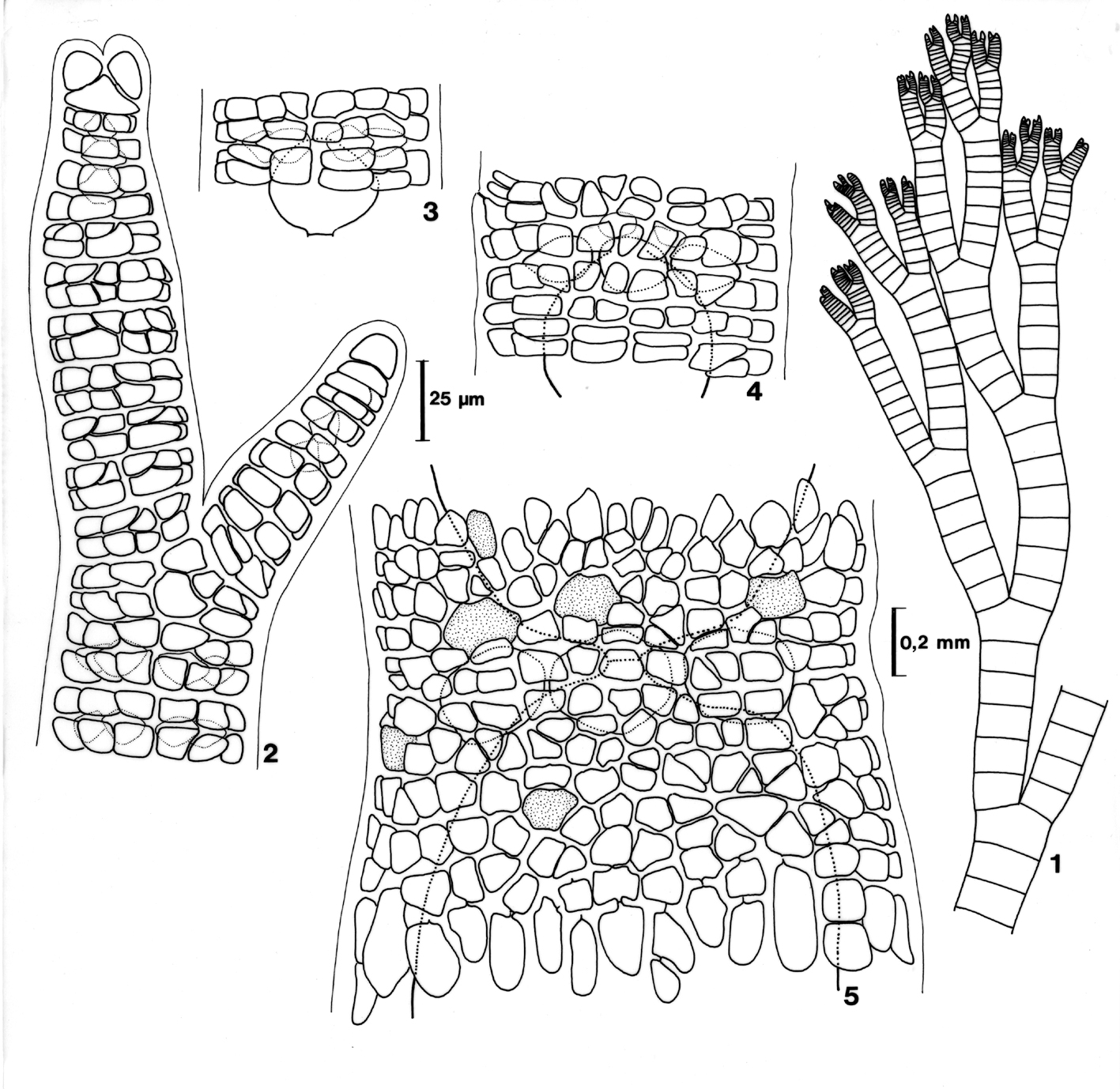
Ceramium centroceratiforme. 1-2 Thallus apex. 3-5 Development of cortication. Reproduced from Stegenga et al. (1997).
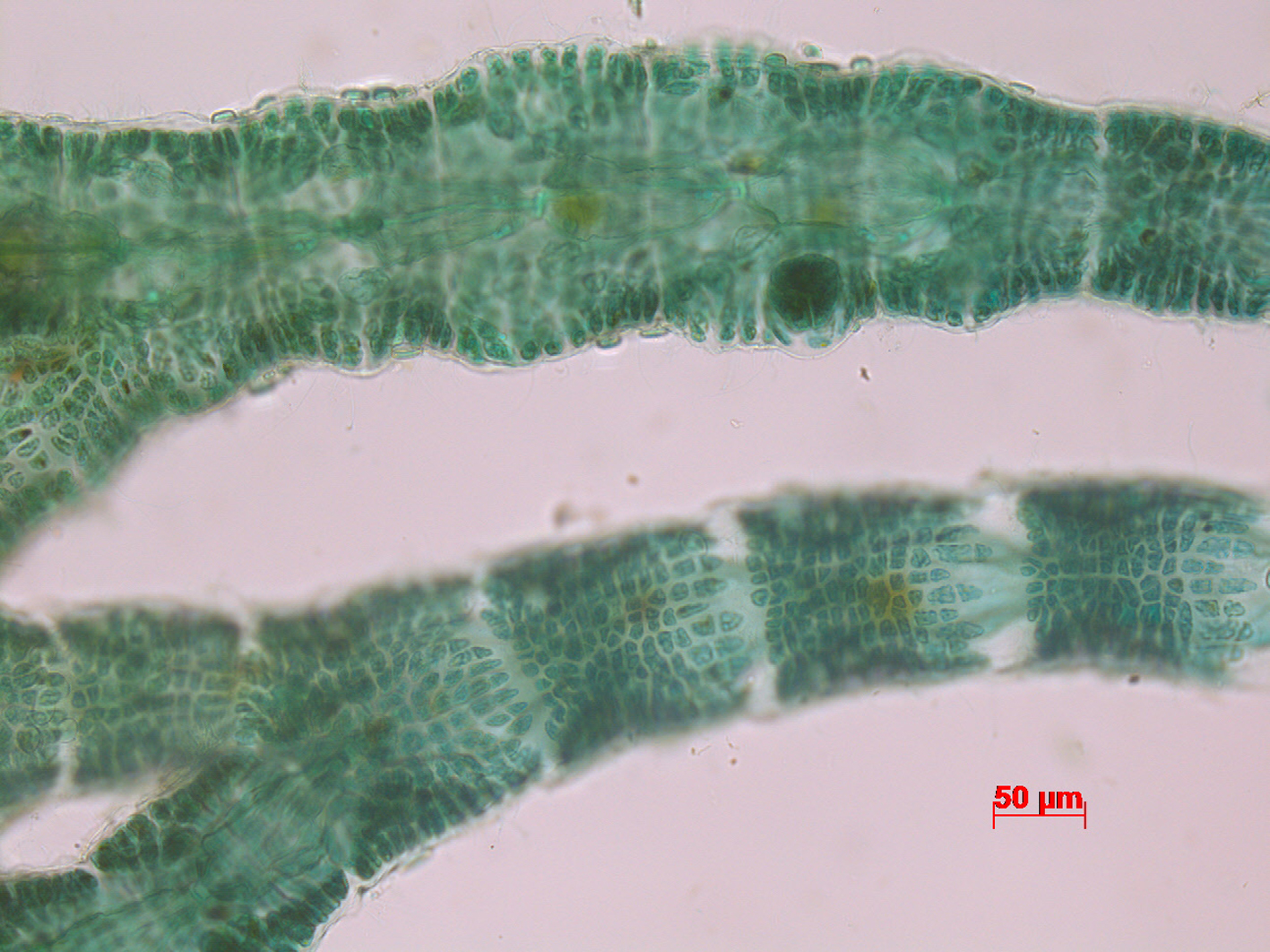
Ceramium centroceratiforme. Regular cortical structure, with tetrasporangium. Stained slide, Kei Mouth.
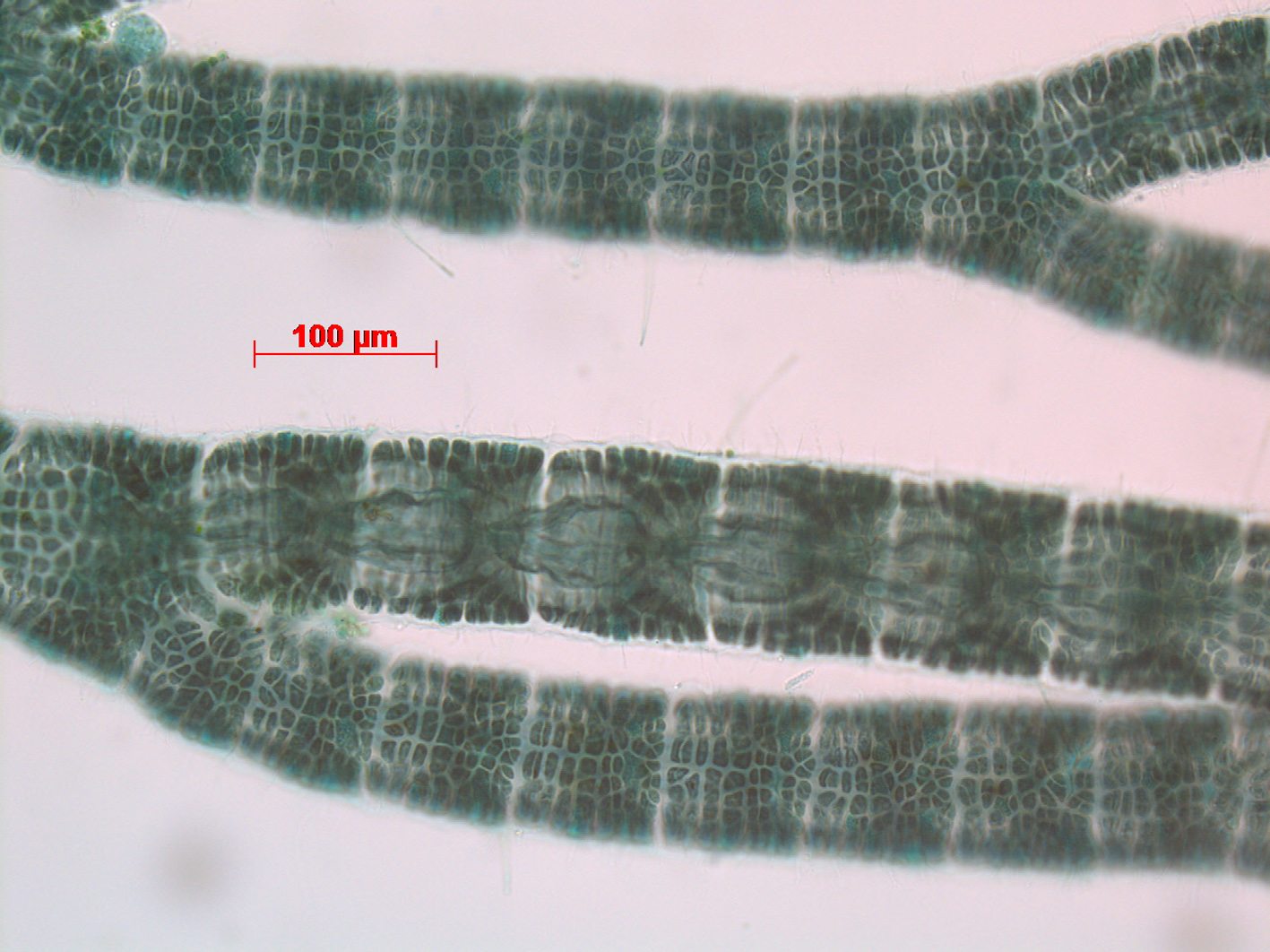
Ceramium centroceratiforme. Stained slide, Goukamma.
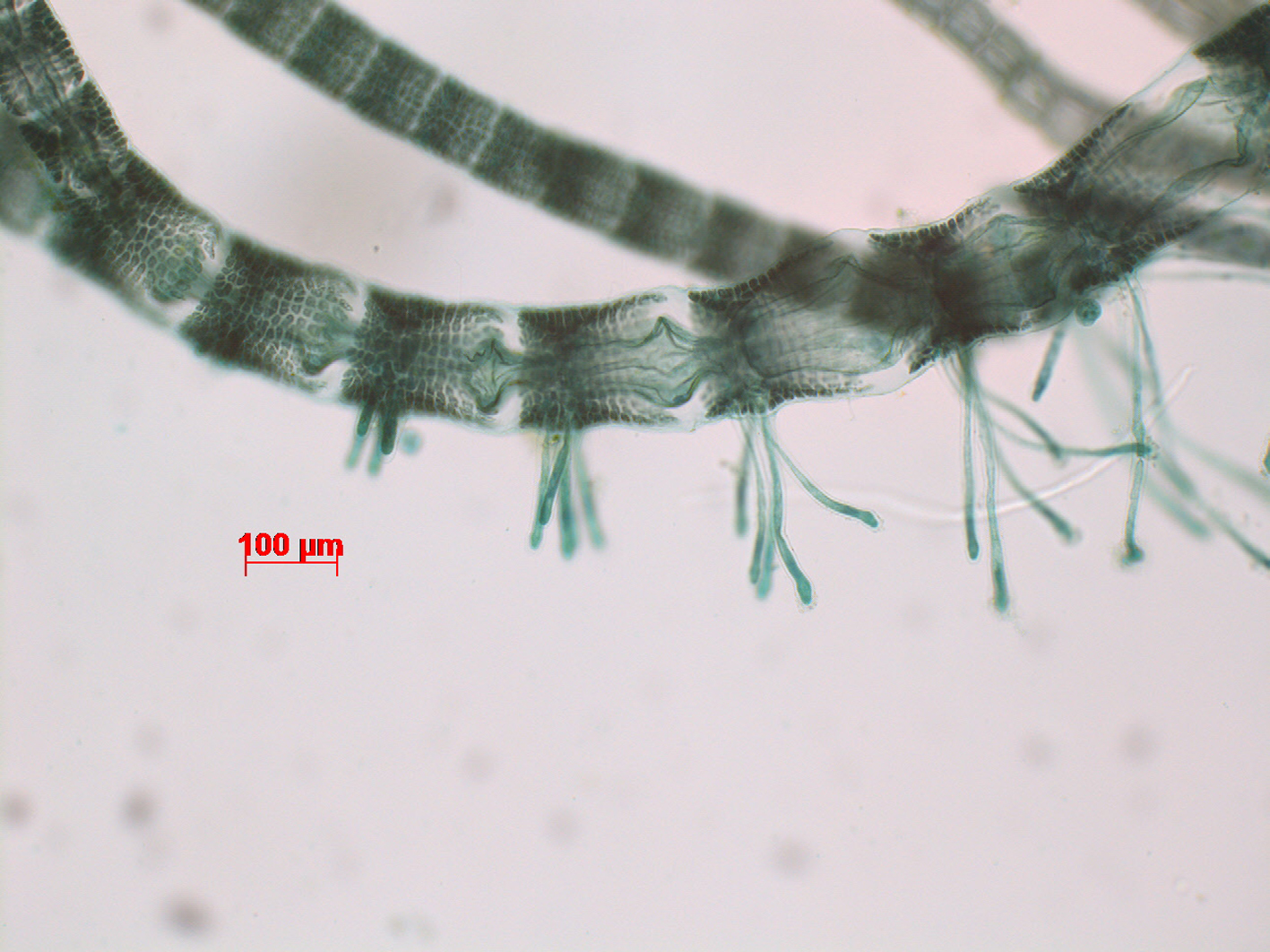
Ceramium centroceratiforme. Rhizoids on lower ends of filaments. Stained slide, Goukamma.
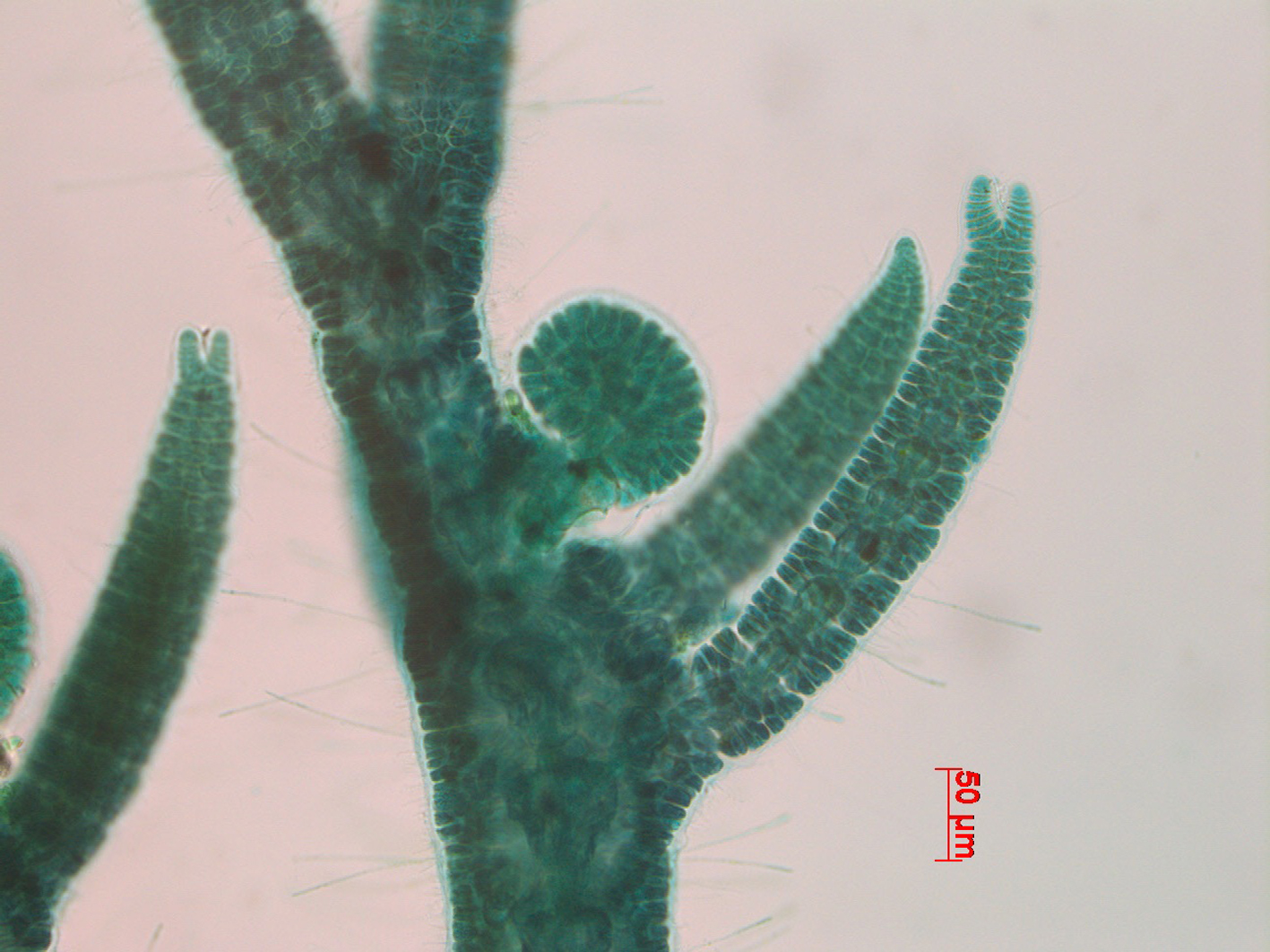
Ceramium centroceratiforme. Carposporophyte with a few involucral filaments. Stained slide, Goukamma.
References Ceramium centroceratiforme
Silva, P.C., Basson, P.W. & Moe, R.L. 1996. Catalogue of the benthic marine algae of the Indian Ocean. University of California Publications in Botany 79: 1-1259.
Simons, R.H. 1966. The genus Ceramium in South Africa. Bothalia 9: 153-168, 3 figs, 2 plates.
Stegenga, H., Bolton, J.J. & R. J. Anderson. 1997. Seaweeds of the South African west coast. Contributions from the Bolus Herbarium 18: 655 pp.
Cite this record as:
Anderson RJ, Stegenga H, Bolton JJ. 2016. Seaweeds of the South African South Coast.
World Wide Web electronic publication, University of Cape Town, http://southafrseaweeds.uct.ac.za; Accessed on 13 January 2026.